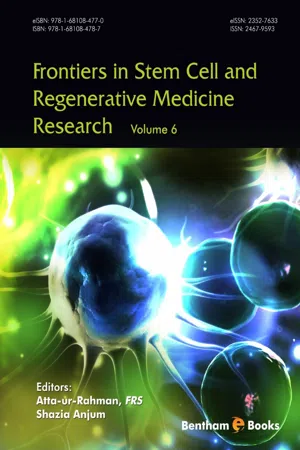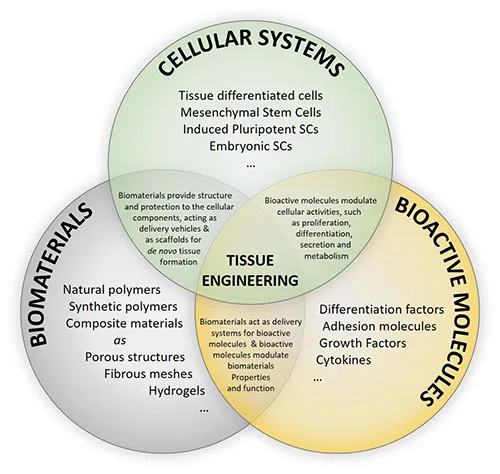The Potential Clinical Application of Mesenchymal Stem Cells from the Dental Pulp (DPSCs) for Bone Regeneration
Ana Rita Caseiro1, 2, 3, #, Rui Alvites1, 2, #, Sílvia Santos Pedrosa1, 2, #, José Miguel Campos1, 2, 4, Inês Leal Reis1, 2, José Domingos Santos3, Carla Mendonça1, 2, Luís Miguel Atayde1, 2, Ana Colette Maurício1, 2, * 1 Centro de Estudos de Ciência Animal (CECA), Instituto de Ciências, Tecnologias e Agroambiente (ICETA) da Universidade do Porto, Praça Gomes Teixeira, Apartado 55142, 4051-401, Porto, Portugal
2 Departamento de Clínicas Veterinárias, Instituto de Ciências Biomédicas de Abel Salazar (ICBAS), Universidade do Porto (UP), Rua de Jorge Viterbo Ferreira, nº 228, 4050-313 Porto, Portugal
3 CEMUC, Departamento de Engenharia Metalúrgica e Materiais, Faculdade de Engenharia, Universidade do Porto, Rua Dr. Roberto Frias s/n, 4200-465 Porto, Portugal
4 Escola Universitária Vasco da Gama (EUVG), Hospital Veterinário Universitário de Coimbra (HVUC), Av. José R. Sousa Fernandes, Campus Universitário – Bloco B, Lordemão, 3020-210 Coimbra, Portugal
Abstract
The skeleton has the vital role of providing support and protection to all body organs, as well as to function as storage system for ions and other components essential to its homeostasis, also presenting essential function in the movement and posture of the individual. Bone fractures are a fairly common situation affecting individuals of all ages, but gain importance when concomitant pathologies are present or when the bone lesions’ extension exceeds the tissues’ intrinsic healing capabilities. As such, biomedical research has invested in unveiling adequate therapies to aid in those cases. The tissue engineering field has therefore evolved in the direction of developing biomaterials and scaffolds to structure, support and promote bone ingrowth, and in developing strategies to optimize these biomaterials in vivo performance, by including cell-based therapies and growth factors. Herein, we discuss one promising strategy for the optimization of these hybrid systems, through the association of biomaterials to a specific source of mesenchymal stem cells: the dental pulp stem cells. Dental pulp stem cells can be found in individuals of any age, and can be easily isolated from deciduous and definitive teeth, expanded and cryopreserved for further
use. These cells are capable of differentiating towards multiple lineages, presenting great potential for osteo-differentiation. Dental pulp stem cells have been demonstrated to incorporate diverse biomaterial systems and promote mineral deposition both in vitro and in vivo, aiming at the reconstruction of osseous defects, in either experimental or clinical situations. The mesenchymal stem cells from the dental pulp can also be found and isolated from many species other than humans, granting them potential to be implemented not only in human medicine but also in veterinary care practices, and in regenerative strategies for other organs and tissues, such as dental reconstruction and nervous system regeneration.
Keywords: Adult teeth, Animal models, Biomaterials, Bone regeneration, Cell isolation, Cell sources, Ceramic biomaterials, Deciduous teeth, Dental cells, Dental pulp, Dental regeneration, Differentiation, Growth factors, In vitro, In vivo, Mesenchymal stem cells, Nerve regeneration, Stem cells, Tissue regeneration, Tooth.
* Corresponding author Ana Colette Maurício: Departamento de Clínicas Veterinárias, Instituto de Ciências Biomédicas Abel Salazar (ICBAS), Rua de Jorge Viterbo Ferreira, nº 228, 4050-313 Porto, Portugal; Mobile: +351919071286; Tel: +351220428000; E-mails: [email protected], [email protected]# These authors should be considered as first authors. INTRODUCTION
Nearly 30 years ago, Vacanti [1] described the transplantation of cells using bio-absorbable polymer matrices. That was the beginning of tissue engineering, then described as “an interdisciplinary field that applies principles of engineering and life sciences toward the development of biological substitutes that restore, maintain, or improve tissue function”. The fundamentals of tissue engineering are based on three major pillars: scaffolds, cells and regeneration factors, all deemed essential for the success of stem cells based therapies (Fig. 1) [2-4].
Stem cells are responsive undifferentiated cells with varying degrees of self-proliferation and differentiation plasticity. These characteristics makes stem cells attractive as tissue regeneration motors [5]. Although the number of stem cells is higher before birth, in the adult there are still several “niches” with a significant number of stem cells [6].
The stem cells “niches” in adults include the skin, adipose tissue, peripheral blood, bone marrow, pancreas, intestine, brain, hair follicles, and others, as well as in the dental pulp [7]. In this review we focus on dental pulp derived stem cell population. Dental stem cells (DPSCs) are one good alternative to other sources’ cells due to their easy collection from healthy donors and high proliferation and differentiation ability [8-11], with the advantage of being collect from both infants and adults, which are frequently subjected to dental orthodontic treatments that imply the removal of healthy teeth.
Fig. (1)) The three pillars of tissue engineering – the biomaterial scaffolds that provide structure and a protective environment for the tissue regeneration; the cells that motor the regeneration itself; and the regeneration factors that promote and enhance cell growth and differentiation.
DENTAL STEM CELLS
Tooth Anatomy and the DPSCs Niche
Human teeth are an incredibly specialized organ composed of the crown (visible part that protrudes from the gingiva), the neck (the transition area), and the root (anchored to the alveola...

